Audi Q4 e-tron vs Jeep Avenger - Differences and prices compared
Costs and Efficiency:
Price and efficiency are often the first things buyers look at. Here it becomes clear which model has the long-term edge – whether at the pump, the plug, or in purchase price.
Jeep Avenger has a clearly advantage in terms of price – it starts at 21900 £, while the Audi Q4 e-tron costs 39600 £. That’s a price difference of around 17615 £.
In terms of energy consumption, the advantage goes to the Jeep Avenger: with 15.50 kWh per 100 km, it’s minimal more efficient than the Audi Q4 e-tron with 15.90 kWh. That’s a difference of about 0.40 kWh.
As for range, the Audi Q4 e-tron performs noticeable better – achieving up to 554 km, about 154 km more than the Jeep Avenger.
Engine and Performance:
Power, torque and acceleration are the classic benchmarks for car enthusiasts – and here, some clear differences start to show.
When it comes to engine power, the Audi Q4 e-tron has a decisively edge – offering 340 HP compared to 156 HP. That’s roughly 184 HP more horsepower.
In acceleration from 0 to 100 km/h, the Audi Q4 e-tron is significantly quicker – completing the sprint in 5.40 s, while the Jeep Avenger takes 9 s. That’s about 3.60 s faster.
In terms of top speed, the Jeep Avenger performs minimal better – reaching 194 km/h, while the Audi Q4 e-tron tops out at 180 km/h. The difference is around 14 km/h.
There’s also a difference in torque: Audi Q4 e-tron pulls clearly stronger with 679 Nm compared to 260 Nm. That’s about 419 Nm difference.
Space and Everyday Use:
Beyond pure performance, interior space and usability matter most in daily life. This is where you see which car is more practical and versatile.
Seats: offers more seating capacity – vs .
In curb weight, Jeep Avenger is significantly lighter – 1180 kg compared to 2035 kg. The difference is around 855 kg.
In terms of boot space, the Audi Q4 e-tron offers noticeable more room – 535 L compared to 380 L. That’s a difference of about 155 L.
In maximum load capacity, the Audi Q4 e-tron performs slightly better – up to 1490 L, which is about 213 L more than the Jeep Avenger.
When it comes to payload, Audi Q4 e-tron slight takes the win – 515 kg compared to 502 kg. That’s a difference of about 13 kg.
Who comes out on top?
Overall, the Audi Q4 e-tron shows itself to be dominates this comparison and secures the title of DriveDuel Champion.
It convinces with the more balanced overall package and proves to be the more versatile choice for everyday use.
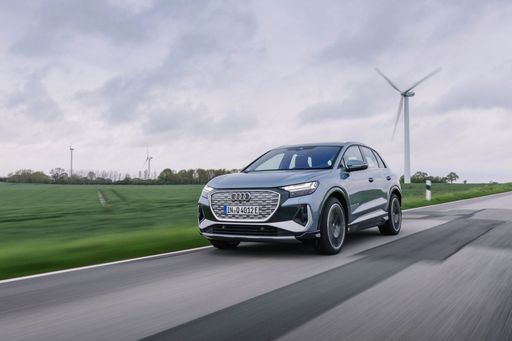 @ Audi AG
@ Audi AG
Audi Q4 e-tron
Costs and Consumption
View detailed analysis
Engine and Performance
View detailed analysis
Dimensions and Body
View detailed analysis
Audi Q4 e-tron
The Audi Q4 e-tron brings Audi polish into the electric crossover scene, pairing a sleek exterior with a refined, airy interior that makes everyday driving feel distinctly premium. It’s an easy-to-live-with EV that balances comfort and real-world usability with intuitive tech, making it a smart choice for buyers who want electric mobility without giving up Audi character — and yes, it still looks good in the driveway.
details @ Audi AG
@ Audi AG
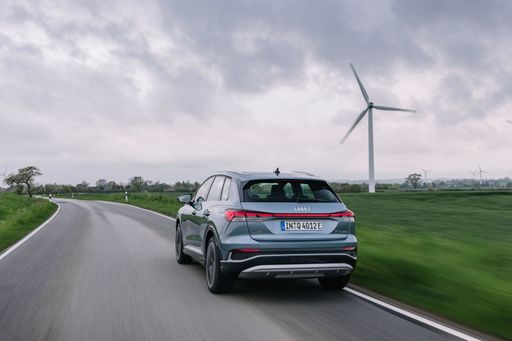 @ Audi AG
@ Audi AG
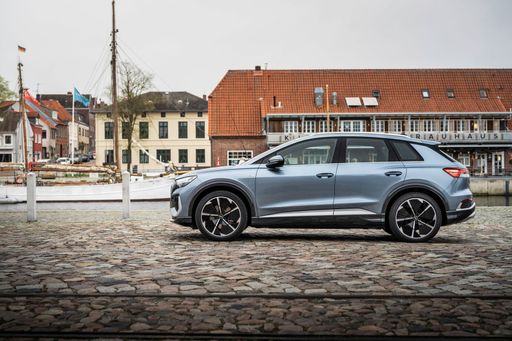 @ Audi AG
@ Audi AG
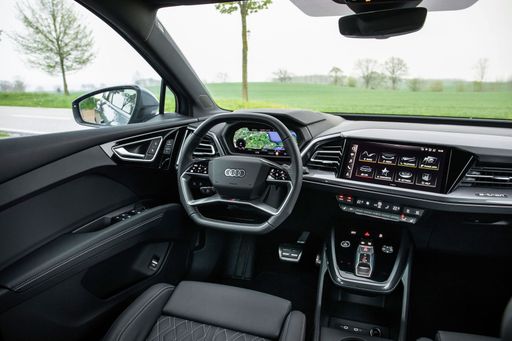 @ Audi AG
@ Audi AG
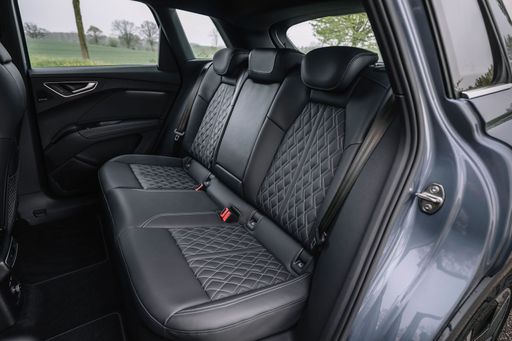 @ Audi AG
@ Audi AG
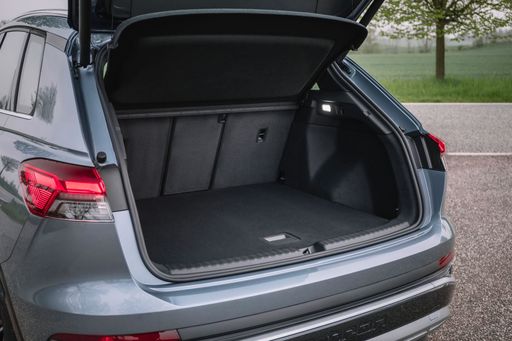 @ Audi AG
@ Audi AG
Jeep Avenger
The Jeep Avenger shrinks Jeep's boxy, adventurous styling into a city-friendly electric crossover that looks just as at home on tight streets as it does on muddy weekend lanes. It's a savvy pick for drivers who want go-anywhere attitude without the truck-size ego — practical inside, lively around town and ready to tackle a bit of rough stuff when the mood strikes.
details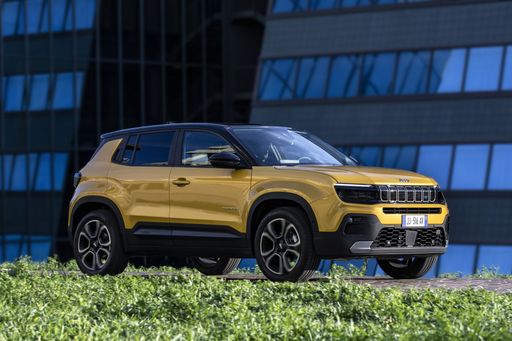 @ Jeep / Stellantis Media
@ Jeep / Stellantis Media
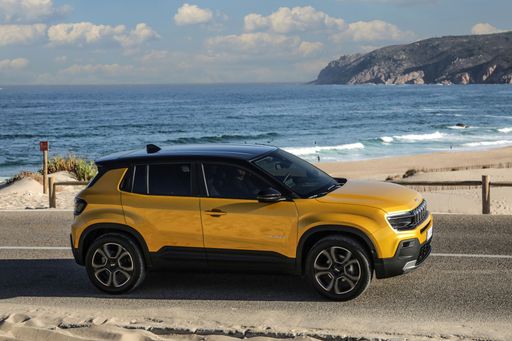 @ Jeep / Stellantis Media
@ Jeep / Stellantis Media
 @ Jeep / Stellantis Media
@ Jeep / Stellantis Media
 @ Jeep / Stellantis Media
@ Jeep / Stellantis Media
 @ Jeep / Stellantis Media
@ Jeep / Stellantis Media
 @ Audi AG
@ Audi AG
|
 @ Jeep / Stellantis Media
@ Jeep / Stellantis Media
|
|
|
|
Costs and Consumption |
|
|---|---|
|
Price
39600 - 58800 £
|
Price
21900 - 36900 £
|
|
Consumption L/100km
-
|
Consumption L/100km
4.9 - 5.7 L
|
|
Consumption kWh/100km
15.9 - 17.4 kWh
|
Consumption kWh/100km
15.50 kWh
|
|
Electric Range
406 - 554 km
|
Electric Range
400 km
|
|
Battery Capacity
59 - 77 kWh
|
Battery Capacity
51 kWh
|
|
co2
0 g/km
|
co2
0 - 129 g/km
|
|
Fuel tank capacity
-
|
Fuel tank capacity
44 L
|
Dimensions and Body |
|
|---|---|
|
Body Type
SUV
|
Body Type
SUV
|
|
Seats
5
|
Seats
5
|
|
Doors
5
|
Doors
5
|
|
Curb weight
2035 - 2235 kg
|
Curb weight
1180 - 1520 kg
|
|
Trunk capacity
520 - 535 L
|
Trunk capacity
325 - 380 L
|
|
Length
4588 mm
|
Length
4084 - 4088 mm
|
|
Width
1865 mm
|
Width
1776 mm
|
|
Height
1614 - 1632 mm
|
Height
1527 - 1541 mm
|
|
Max trunk capacity
1460 - 1490 L
|
Max trunk capacity
1218 - 1277 L
|
|
Payload
505 - 515 kg
|
Payload
494 - 502 kg
|
Engine and Performance |
|
|---|---|
|
Engine Type
Electric
|
Engine Type
Electric, Petrol, Petrol MHEV
|
|
Transmission
Automatic
|
Transmission
Automatic, Manuel
|
|
Transmission Detail
Reduction Gearbox
|
Transmission Detail
Reduction Gearbox, Manual Gearbox, Dual-Clutch Automatic
|
|
Drive Type
Rear-Wheel Drive, All-Wheel Drive
|
Drive Type
Front-Wheel Drive, All-Wheel Drive
|
|
Power HP
204 - 340 HP
|
Power HP
100 - 156 HP
|
|
Acceleration 0-100km/h
5.4 - 8.1 s
|
Acceleration 0-100km/h
9 - 10.6 s
|
|
Max Speed
160 - 180 km/h
|
Max Speed
150 - 194 km/h
|
|
Torque
310 - 679 Nm
|
Torque
205 - 260 Nm
|
|
Number of Cylinders
-
|
Number of Cylinders
3
|
|
Power kW
150 - 250 kW
|
Power kW
74 - 115 kW
|
|
Engine capacity
-
|
Engine capacity
1199 cm3
|
General |
|
|---|---|
|
Model Year
2023 - 2025
|
Model Year
2023 - 2025
|
|
CO2 Efficiency Class
A
|
CO2 Efficiency Class
A, D, C
|
|
Brand
Audi
|
Brand
Jeep
|
What drive types are available for the Audi Q4 e-tron?
The Audi Q4 e-tron is offered with Rear-Wheel Drive or All-Wheel Drive.
The prices and data displayed are estimates based on German list prices and may vary by country. This information is not legally binding.
